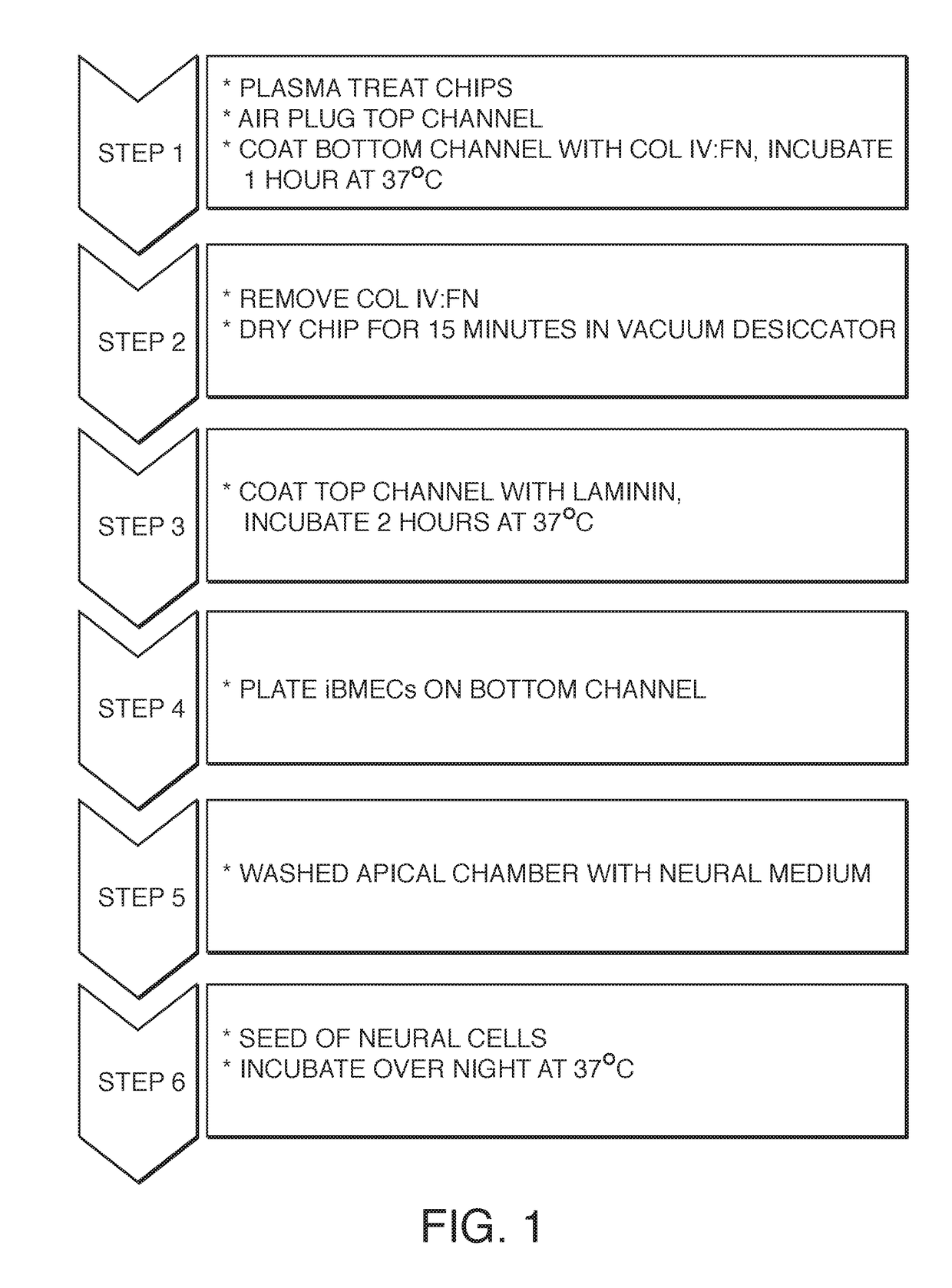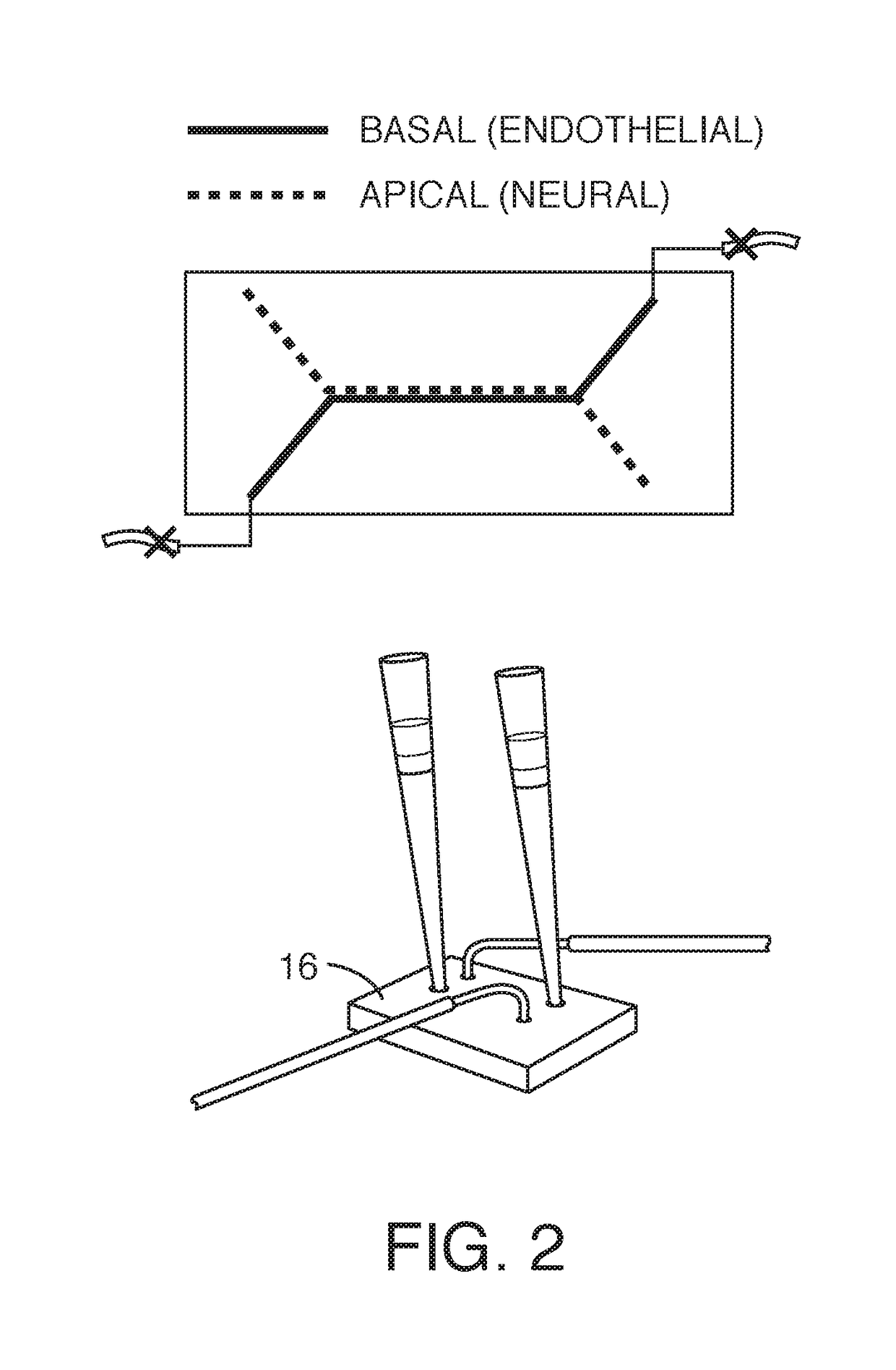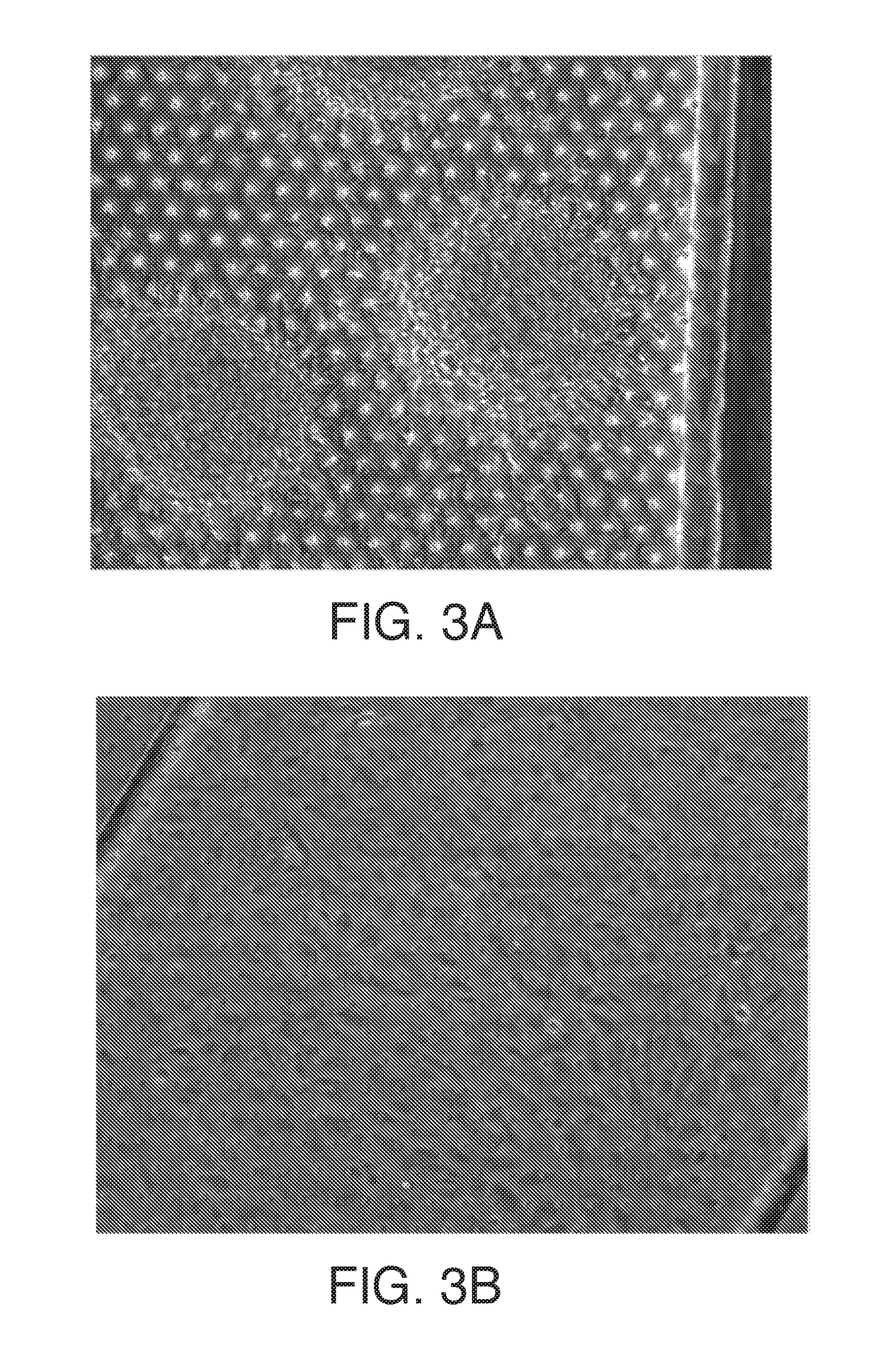Microfluidic Model Of The Blood Brain Barrier
a brain barrier and microfluidic technology, applied in the field of brain cell culture, can solve problems such as neurovascular degeneration, achieve the effects of improving the maturation of astrocytes and bmecs, improving and maintaining barrier function, and enhancing endogenous media conditioning
- Summary
- Abstract
- Description
- Claims
- Application Information
AI Technical Summary
Benefits of technology
Problems solved by technology
Method used
Image
Examples
example 1
[0076]Cells are prepared either directly from cultured iPSCs or from frozen lots of pre-differentiated cells. Cells are thawed (or dissociated fresh) and seeded into the chip at day 8-9 (in the case of BMECs differentiation) and at various points in neural differentiation, In the case of MNs, for example, cells are seeded at day 12 of differentiation either from freshly differentiated cultures or directly from a thawed vial, iPSC-derived forebrain neural progenitor cultures (dubbed EZs) were cultured in chip either dissociated or as neural spheres that attached and extended in 3 dimensions (See FIG. 3A-B apical),The various factors used in the protocol (see above chart and tabs) for the generation of motor neurons are provided (using iPSCs as the starting material).
example 2
[0077]In this example, another protocol for the generation of motor neurons is provided using iPSCs as the starting material: The various factors used in the protocol per day (see FIG. 31) for the generation of motor neurons are provided (using iPSCs as the starting material).
example 3
[0078]This example explores various conditions tested for seeding neural (EZ spheres and iMNPs) and endothelial cells (iBMECs) from frozen stocks of cells on surfaces treated with different extracellular matrices (ECMs). The best results for iBMECs were achieved with a mixture of collagen and fibronectin (4:1 ratio) using a seeding concentration of 5×106 cells / ml (Table 1). Given these results, seeding was attempted on microfluidic devices, i.e. chips, Table 2 shows various conditions tested for seeding neural (EZ spheres, iNPCs and iMNPs) and endothelial cells (iBMECs) on the apical and basal sides of a microfluidic chip using frozen stocks of cells.
[0079]While a variety of protocols were explored, one embodiment for preparing and seeding a microfluidic chip comprising six steps. FIG. 1 shows the workflow, First, the chip (or regions thereof) are treated to promote wetting or protein adhesion (e.g. by plasma treatment). One or more channels are then plugged (see the top schematic o...
PUM
 Login to View More
Login to View More Abstract
Description
Claims
Application Information
 Login to View More
Login to View More - R&D
- Intellectual Property
- Life Sciences
- Materials
- Tech Scout
- Unparalleled Data Quality
- Higher Quality Content
- 60% Fewer Hallucinations
Browse by: Latest US Patents, China's latest patents, Technical Efficacy Thesaurus, Application Domain, Technology Topic, Popular Technical Reports.
© 2025 PatSnap. All rights reserved.Legal|Privacy policy|Modern Slavery Act Transparency Statement|Sitemap|About US| Contact US: help@patsnap.com



